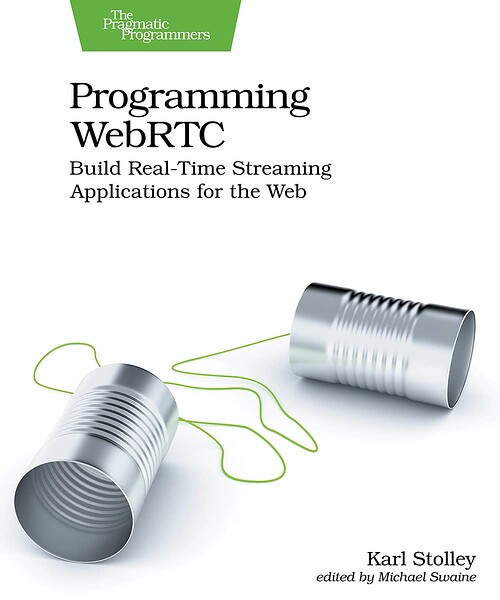Karl Stolley @karlstolley
edited by Michael Swaine @michaelswaine
Build your own video chat application—but that’s just the beginning. With WebRTC, you’ll create real-time applications to stream any kind of user media and data directly from one browser to another, all built on familiar HTML, CSS, and JavaScript. Power real-time activities like text-based chats, secure peer-to-peer file transfers, collaborative brainstorming sessions—even multiplayer gaming. And you’re not limited to two connected users: an entire chapter of the book is devoted to engineering multi-peer WebRTC apps that let groups of people communicate in real time. You’ll create your own video conferencing app. It’s all here.
WebRTC is an API exposed in all modern web browsers. After almost a decade of development, the WebRTC specification was finalized, and this book provides faithful coverage of that finalized specification. You’ll start by building a basic but complete WebRTC application for video chatting. Chapter by chapter, you’ll refine that app and its core logic to spin up new and exciting WebRTC-powered apps that will have your users sharing all manner of data with one another, all in real time. No third-party libraries or heavy downloads are required for you or your users: you’ll be writing and strengthening your knowledge of vanilla JavaScript and native browser APIs.
You’ll learn how to directly connect multiple browsers over the open internet using a signaling channel. You will gain familiarity with a whole set of Web APIs whose features bring WebRTC to life: requesting access to users’ cameras and microphones; accessing and manipulating arbitrary user files, right in the browser; and web storage for persisting shared data over the life of a WebRTC call. Like any Web API, WebRTC doesn’t enjoy a perfect implementation in any browser. But this book will guide you in writing elegant code to the specification, with backward-compatible fallback code for use in almost all modern browsers.
Use WebRTC to build the next generation of web applications that stream media and data in real time, directly from one user to another—all by working in the browser.
Karl Stolley is an associate professor of information technology and management at Illinois Institute of Technology in Chicago. He’s been teaching, researching, and practicing web development up and down the stack since the blink tag was still a thing. He’s a frequent speaker at national and international conferences, and a routine presenter and participant in professional developer groups and meetups in Chicago.
- Full details: Programming WebRTC: Build Real-Time Streaming Applications for the Web by Karl Stolley
- View this book’s portal and details on how to post errata and suggestions here.
Don’t forget you can get 35% off with your Devtalk discount! Just use the coupon code “devtalk.com" at checkout ![]()

